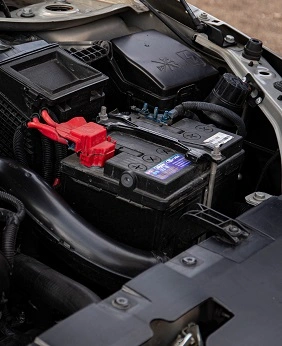What Does a Battery Charger Do in Repair Mode? We explain your charger’s repair mode! Learn about the 5 key stages to revive a dead battery.
Have you ever been let down by a dead battery when you need it most? It’s happened to us all. But did you know that your battery charger has a secret weapon that can save the day?
It’s called repair mode, and in this post, we’ll look at what it does and how you can use it to save time, money, and your sanity.
Table of Contents
Why Do You Need A Repair Mode
Not all battery chargers come equal. Some chargers have a repair mode, which can work magic on even some batteries that seem only good for the trash.
An often-used battery will lose its capacity over time. This happens because lead sulfate crystals grow inside the battery. This makes it difficult for the battery to hold a charge. It is a common problem with lead-acid batteries used in cars, boats, and other vehicles.
Repair mode breaks down these crystals to restore the battery’s capacity. In repair mode, the battery charger sends a high-voltage pulse through the battery. In conjunction with longer charging cycles, this breaks down the lead crystals and restores capacity.
The process can take several hours, depending on the battery’s condition. Once complete, you can charge your battery as normal at restored capacity.
It is important to note that not all chargers have a repair mode. And not all batteries are restorable with this feature. Some batteries may be too damaged or degraded to for repair mode and may need replacing.
Additionally, repair mode should only be used as directed by the manufacturer. Improper use can damage the battery or the charger.
How Does Repair Mode Work?
Repair mode runs the battery through a series of charging cycles. These include desulfation, bulk charging, absorption charging, and float charging. In this section, we will discuss each of these steps in detail.
Step 1: Battery Diagnosis

The first step in repair mode is to diagnose the battery to determine if it is suitable for repair. The charger measures the voltage and resistance of the battery. Then it compares it to a set of predetermined values. If the battery meets the criteria, the charger will proceed to the next step.
Step 2: Desulfation
Desulfation breaks down lead sulfate crystals that form on the battery plates. It applies a high-voltage pulse to the battery. That causes the crystals to break down and return to the electrolyte solution. The charger will repeat this process several times until the crystals dissolve.
Step 3: Bulk Charging
Bulk charging is the process of charging the battery at a high current to a specific voltage. This step charges the battery and brings it up to a suitable level for absorption charging.
Step 4: Absorption Charging
Absorption charging hits the battery with a lower current until it reaches its capacity. This step ensures that the battery is charged and ready to use.
Step 5: Float Charging
Float charging is the final step in repair mode. It maintains the battery at a constant voltage level. This step keeps the battery charged and ready for use.
By following these steps, repair mode revives old batteries and extends their lifespan.
| Step | Action | Purpose |
| Diagnosis | Measure battery voltage and resistance | Determine if the battery is suitable for repair mode |
| Desulfation | High-voltage pulse to break down lead sulfate crystals | Dissolve lead sulfate crystals |
| Bulk Charging | Charge battery at a high current to a specific voltage | Bring battery to a suitable level for absorption charging |
| Absorption | Charge battery with a lower current until it’s capacity | Ensure battery is fully charged and ready to use |
| Float Charging | Maintain battery at a constant voltage level | Keep battery charged and ready for use |
When Should You Use Repair Mode?
If you have an old battery or one that has not been used for a while, it might be time to use repair mode. It will help revive batteries that have been over-discharged or undercharged.
Before using repair mode, check the manufacturer’s recommendations for your specific battery.
If you’re not sure if repair mode is right for your battery, consult with a technician. They can recommend the way forward for your battery. Testing and diagnosis is a service offered by your local auto parts center, often free of charge.
Before You Go …
I hope this guide has given you a heads-up about repair mode and its uses. But it is not the only aspect of battery care and maintenance that we need to think about.
Other procedures to keep your battery fit include proper charging, regular cleaning, and monitoring. Make sure you follow these processes as well to ensure that your battery is your friend, not your enemy. Be sure to check out my other battery maintenance guides.
I’m passionate about helping people make the most of their batteries. Feel free to explore the site for more tips and tricks. And if you have any questions or suggestions for future articles, don’t hesitate to reach out to me.
FAQs – What Does a Battery Charger Do in Repair Mode?
Here’s the FAQs
What is the repair mode on a battery charger?
Repair mode is a feature on some battery chargers that can break down lead sulfate crystals inside a battery to restore its capacity.
How does repair mode work?
Repair mode works by running the battery through a series of charging cycles, including desulfation, bulk charging, absorption charging, and float charging.
When should you use repair mode on a battery charger?
You should use repair mode if you have an old or unused battery that needs to be revived. However, it’s important to check the manufacturer’s recommendations and consult a technician if you’re unsure.
Can all batteries be restored with repair mode?
No, not all batteries can be restored with repair mode. Some batteries may be too damaged or degraded to benefit from this feature and may need replacing.
What are some other ways to maintain a battery’s lifespan?
Other ways to maintain a battery’s lifespan include proper charging, regular cleaning, and monitoring. It’s important to follow these procedures to ensure your battery stays in good condition.
Is repair mode suitable for all types of batteries?
No, repair mode is typically only suitable for lead-acid batteries used in cars, boats, and other vehicles. Not all chargers have a repair mode, and not all batteries are restorable with this feature.
How long does repair mode take?
The length of time it takes to complete repair mode depends on the battery’s condition. It can take several hours to complete the process.
Can improper use of repair mode damage the battery or charger?
Yes, improper use of repair mode can damage the battery or the charger. It’s important to use repair mode as directed by the manufacturer.
What are the steps involved in repair mode?
The steps involved in repair mode include
battery diagnosis, desulfation, bulk charging, absorption charging and float charging.
When should you use repair mode?
Repair mode is useful for reviving old batteries or batteries that have not been used for a while. It can help to restore capacity to batteries that have been over-discharged or undercharged. However, it’s important to check the manufacturer’s recommendations for your specific battery before using repair mode.


